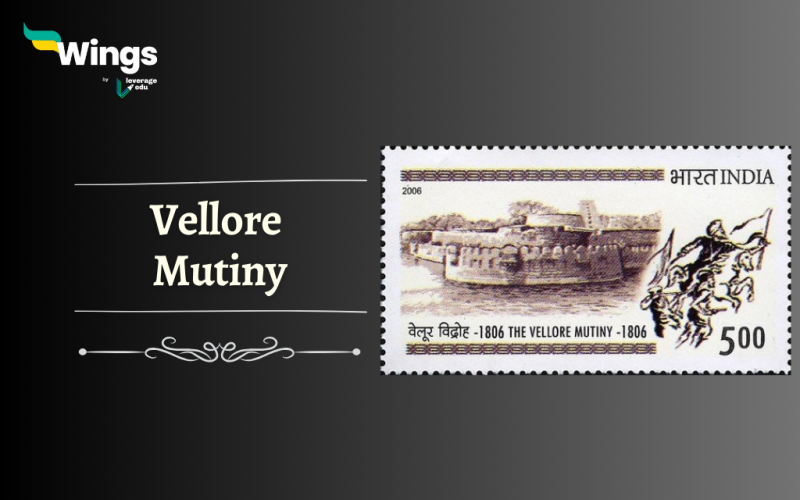The Vellore Mutiny of 1806 stands as a significant but often overlooked episode in India’s journey towards independence. Taking place decades before the more famous Indian Rebellion of 1857, this mutiny marked a turning point in the relationship between Indian sepoys and the East India Company. In this blog, we delve into the causes, outbreak, aftermath, and historical significance of the Vellore Mutiny.
Table of Contents
Causes of Vellore Mutiny
The simmering discontent among Indian sepoys in Vellore can be attributed to several factors.
- The British showed a lack of respect for the religious beliefs of the Hindu and Muslim Indian soldiers.
- Sir John Craddock, the head of the Madras Army, issued directives that banned soldiers from displaying religious symbols on their foreheads and required them to cut their moustaches and shave their beards. This action was deeply offensive to both Hindu and Muslim troops.
- They were also required to wear new, round hats instead of the traditional headgear they were accustomed to, which led to suspicions among the soldiers that they were being coerced into Christianity.
- Craddock went against the advice of the military board to avoid making any changes to the military uniform without considering the necessary precautions for Indian sensitivities.
- A number of soldiers who voiced their opposition to these new regulations were taken to Fort St. George and subjected to severe punishment, including extensive flogging.
- Additionally, the fort contained the wife and children of Tipu Sultan (who was killed in the Battle of Seringapatam in 1799), who were accommodated in a palace within the fort. The sons of Tipu Sultan also played a role in inciting the rebellion.

The Outbreak
In the early hours of July 10, 1806, sepoys in Vellore launched a violent mutiny. They killed their own officers and British soldiers, taking control of the Vellore Fort and raising the flag of the Mysore Sultanate. Major Coopes managed to alert a relief force from Arcot, led by Sir Robert Rollo Gillespie. Gillespie’s swift and decisive action, including a daring bayonet charge and blowing open the gates, resulted in the suppression of the mutiny. About 350 rebels were killed, and the surviving sepoys scattered.
Must Read: Indian Revolutionary Rajguru: Biography, Freedom Struggle
Ruthless Response
The British response to the mutiny was swift and ruthless. Around 100 sepoys who sought refuge inside the palace were executed. After formal trials, mutineers faced various forms of punishment, including execution by firing squad, hanging, and transportation. The three Madras battalions involved in the mutiny were disbanded. British officers responsible for the controversial dress regulations were recalled to England, and the offending orders were cancelled.
Aftermath and Impact
Following the mutiny, the royals imprisoned in Vellore Fort were transferred to Calcutta. The Governor of Madras, William Bentinck, was recalled, and the interference with sepoy religious and cultural practices was abolished. The Vellore Mutiny has intriguing parallels with the larger Indian Rebellion of 1857, both rooted in perceived cultural insensitivity. While the latter led to the dissolution of the East India Company, the Vellore Mutiny served as a harbinger of the larger struggle for India’s independence.
The Vellore Mutiny of 1806, often overshadowed by later events, was a pivotal moment in India’s fight for independence. It highlighted the grievances of Indian sepoys and the consequences of cultural insensitivity. The mutiny serves as a historical reminder of the complex dynamics that ultimately contributed to India’s quest for freedom.
Relevant Blogs
This blog was all about the Vellore Mutiny. If you want to read more articles like this, you can get Short notes on the Modern History of India here. Also, you can visit our general knowledge page on Indian History!
 One app for all your study abroad needs
One app for all your study abroad needs













